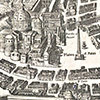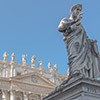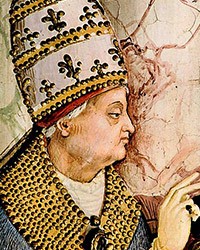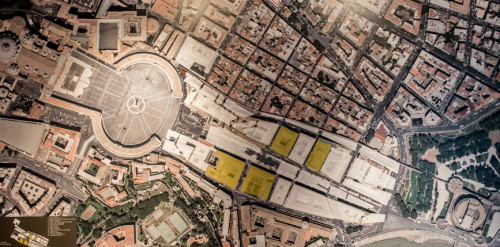
View of St. Peter's Square
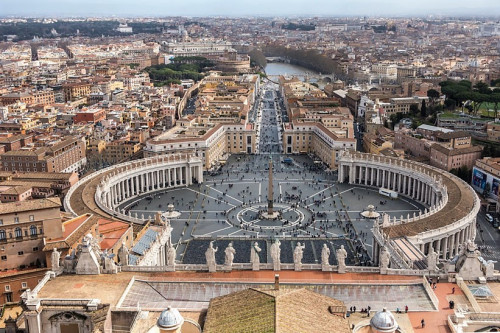
St. Peter's Square (Piazza di San Pietro) and via della Conciliazione, view from the dome of St. Peter
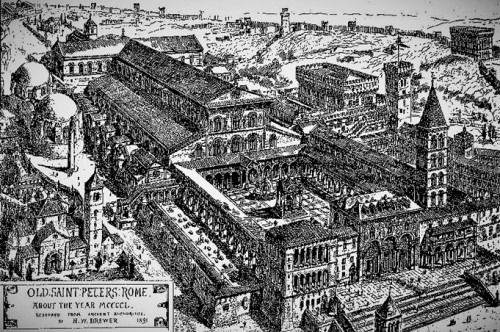
Basilica of St. Peter from the time of Constantine, pic. Wikipedia
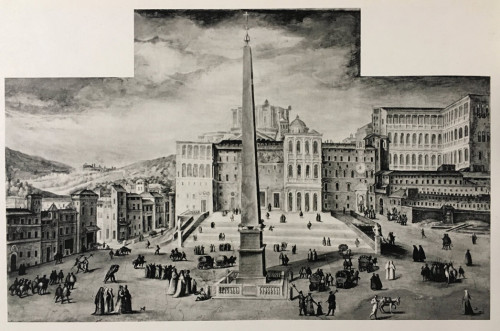
View of the square in front of St. Peter from 1588, fresco, pic. Wikipedia

View of St. Peter's Square, Antonio Tempesta, around 1593, pic. Wikipedia
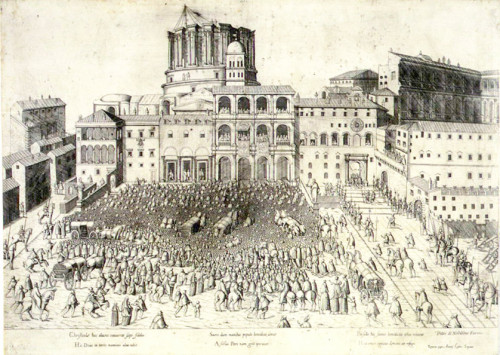
St. Peter's Square, circa 1600, pic. Wikipedia
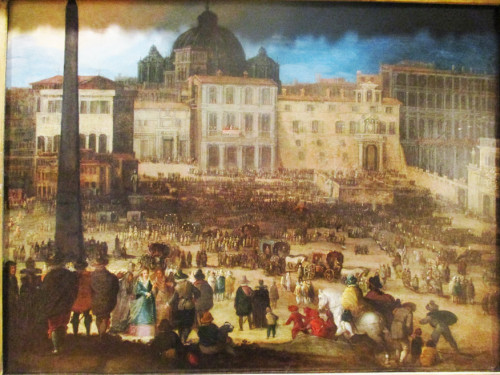
View of St. Peter's Square, Louis de Caullery, scene showing the election of Clement VIII as pope, 1592, pic. Wikipedia
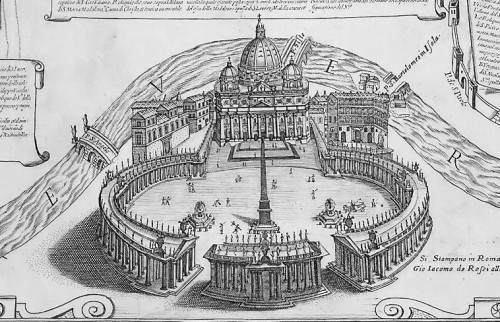
The initial plan of St. Peter's Square and the colonnades designed by Gian Lorenzo Bernini, Giacomo Lauro, 1599, pic. Wikipedia
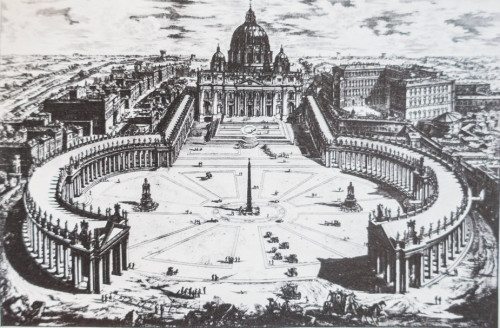
Square and colonnade in front of the Basilica of San Pietro in Vaticano, designed by Gian Lorenzo Bernini
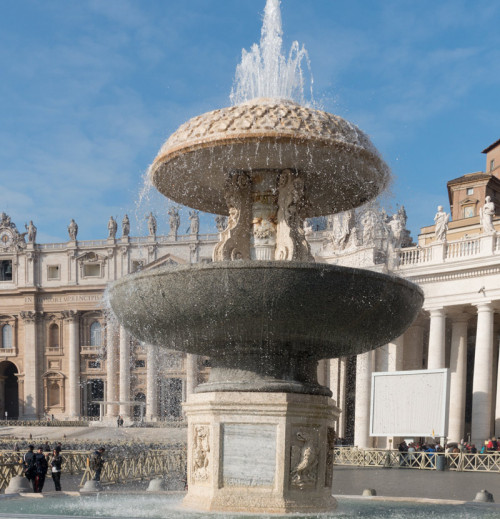
One of the two fountains decorating St. Peter's Square

St. Peter against the facade of the Basilica of San Pietro in Vaticano
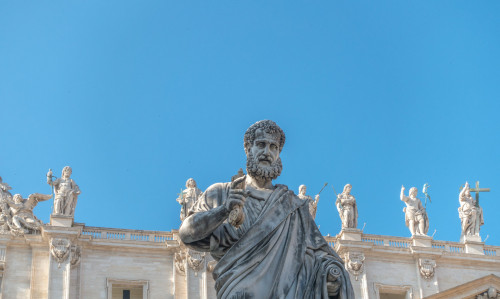
Statue of saint Peter, St. Peter's Square, Giuseppe de Fabris
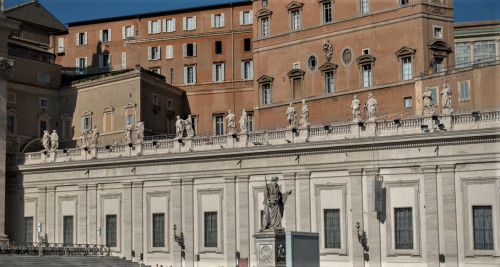
Colonnade surrounding St. Peter's Square, designed by Gian Lorenzo Bernini
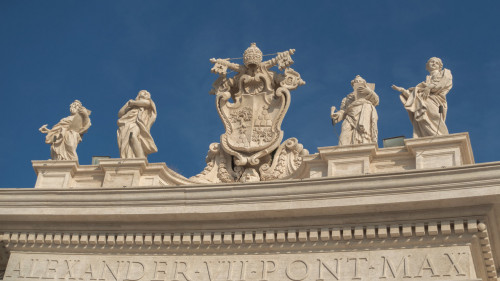
The attic of the Gian Lorenzo Bernini colonnade - statues of saints and the coat of arms of Pope Alexander VII
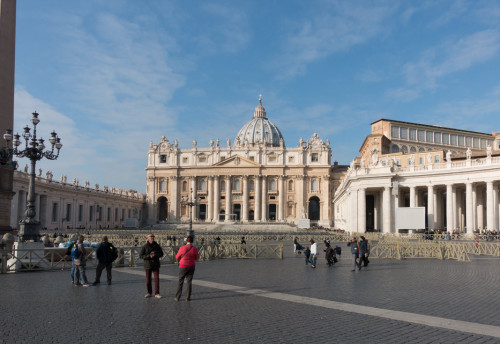
View of the square and Basilica of St. Peter
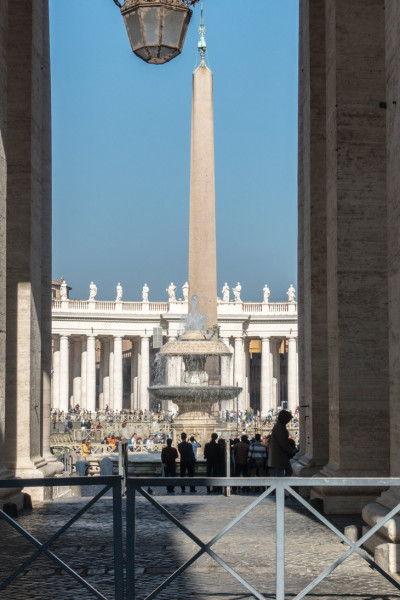
Obelisk Vaticano in the central part of St. Peter's Square (Piazza di San Pietro)
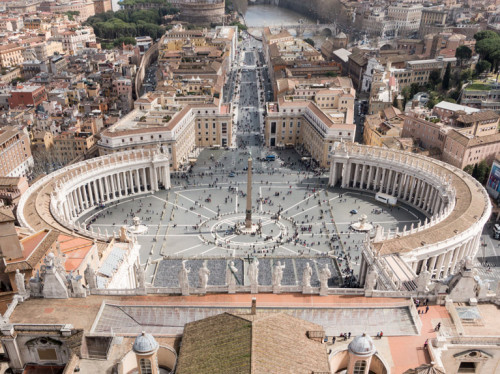
St. Peter's Square (Piazza di San Pietro) and via della Conciliazione, view from the dome of St. Peter
It is here that the faithful gather, to experience the blessing of the pope, or participate in important masses celebrated by him. This square, the most famous in the world, strikes us with its grandeur, but it is not size that is its greatest asset. Rather it is space, in which, despite the surrounding lofty monumentalism, we feel safe in the arms of the Lord – and such was the message intended by its creators.
It is here that the faithful gather, to experience the blessing of the pope, or participate in important masses celebrated by him. This square, the most famous in the world, strikes us with its grandeur, but it is not size that is its greatest asset. Rather it is space, in which, despite the surrounding lofty monumentalism, we feel safe in the arms of the Lord – and such was the message intended by its creators.
Today the square seems to be an integral part of St. Peter's Basilica, yet it was not always so. At the moment of the creation of the Constantine Basilica in the IV century, the area in front of it was characterized by an almost 10-meter drop in the direction of the settlement created along with it (the Borgo). Initial works, with the aim of creating something resembling a square, were inaugurated during the pontificate of Pope Pius II, meaning the second half of the XV century. Until then it was a rather neglected earth-covered area. Still, at the beginning of the XVI century, there were steps in front of the basilica leading to a rectangular plateau (platea Sancti Petri) separating the area of the basilica from the rest of the city. This location had to wait many decades, during which the old Constantine Basilica was gradually being taken apart, changing it into the new one, whose construction was initiated by Pope Julius II. It was completed at the beginning of the XVII century and only then did the idea came about the clean up the area of the future square and provide it with a representative character. But there was more. As it turned out, the building created by various architects boasted a façade that was too monumental, and which to a significant degree covered up Michelangelo’s magnificent dome. It was necessary to come up with an optical "bringing together" of the elevation, while also harmonizing the levels of the – basilica located above with the square located below. This was not only about the religious function of this location but also about the desire to create a shelter (a sort of dormitory) for the incoming, weary pilgrims. Therefore a roof of some sort was needed. The ingenious Gian Lorenzo Bernini, whom Pope Alexander VII entrusted with the task of filling out this space, was faced with a difficult task, even more so because the pontifex not only got involved in the designing process but in a decisive way desired to contribute to it. The architect and his client met and constantly discussed the new arrangements, which were to be a veritable pearl in the foundations of the successor of St. Peter from the Chigi family.
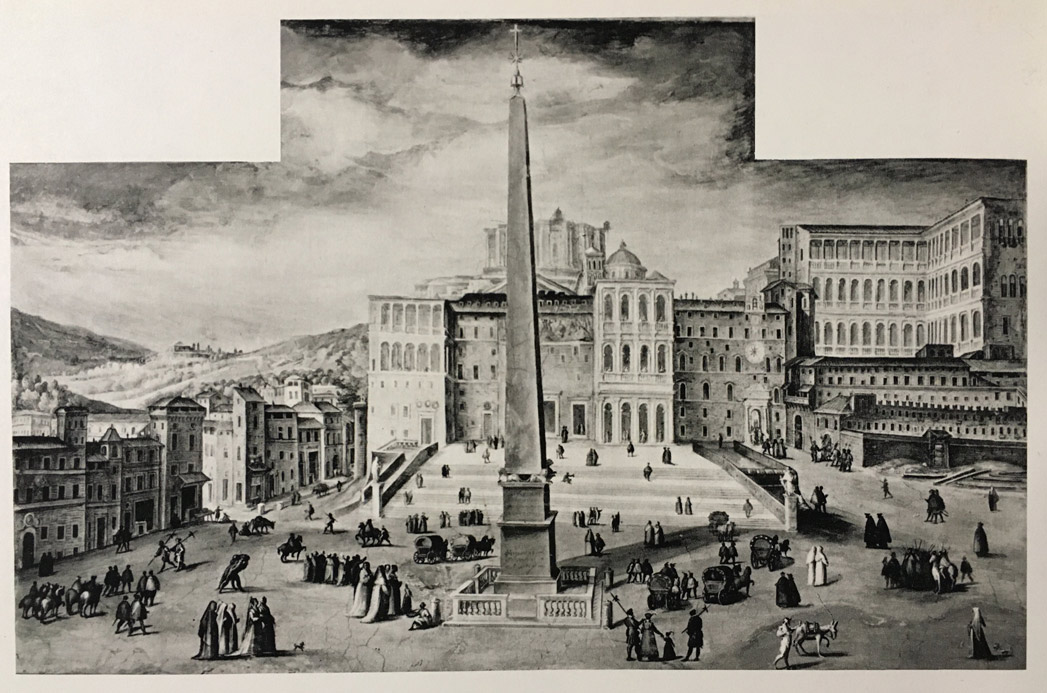
The initial design was not approved by the pope, but the one presented by Bernini in 1657 aroused his enthusiasm. The architect planned a square in the shape of an ellipsis surrounded by a monumental colonnade (Bernini’s colonnade). However, it is not exactly an ellipsis, but an area created by two overlapping circles. This shape was to be a symbol of the Earth (a flattened ellipsis), while the colonnade was to symbolize the arms of the Church (Christ) embracing all people. Bernini optically “narrowed” the façade of the basilica in this way, while “elevating” its dome and at the same time “raising” the square itself.
As a result, the square consists of two connected forms, which is best visible from the dome of the basilica. The first space is shaped like a trapezoid, flanked by two over 5-meter tall figures of SS. Peter and Paul. They were not placed here until the first half of the XIX century (replacing earlier ones). Upon closer inspection, we will notice that they were completed by two artists working in different styles. The statue of St. Peter, with his indispensable attribute, meaning keys and a scroll of laws, was completed by Giuseppe de Fabris, on the other hand, the figure of St. Paul with a sword (the tool of his martyrdom) and a book – by Adamo Tadolini, the greatest student of the ingenious Antonio Canova. The trapezoid is then connected with the ellipsis, which is surrounded by the aforementioned colonnade.
With piety, but with grandeur as well, Bernini planned every detail of the square.
He used the Egyptian obelisk (Vatican Obelisk) which was transported here from the times of Pope Sixtus V, as the center of the oval. On its either side there are picturesque fountains (Fontane di Piazza San Pietro). One of these had previously stood on the square and was modernized by Carlo Maderno at the beginning of the XVII century, the other, very similar was created by Bernini himself. Between the fountains and the obelisk, there are two white, stone slabs. When we stand upon them and look at the colonnade, we will notice a surprising optical effect planned by Bernini – a row of four columns changes into one. Today the area around the obelisk is adorned with the so-called Compass Rose (16 slabs arranged into the shape of a shield with 32 rhombuses), created in 1817 according to the calculations of the astronomer Filippo Gilli. Taking advantage of the changing length of the shadow cast by the obelisk, it shows how the Sun moves from one sign of the Zodiac to the next.
The entire square is 35 thousand square meters. It is 340 meters long and 240 meters wide. The black basalt which is characteristic of the city was not added until the times of Pope Benedict XIII (1724-1730).
We know it can accommodate thousands of the faithful, or perhaps even more, which is testified to by the funeral services of Pope John Paul II, which were reportedly attended by 300 thousand mourners.






















